Being in the tech field, we are always moving from one device to another based on current trends. As we grow more and more reliant on these devices as well as stored data, switching from one to other is sometimes disastrous or at least can be. To set the stage, I have been a iPad user since it has come out. I now own an iPad Mini, Surface RT, and now a Nexus 7. My goal was to give an overall impression of the new Nexus 7 and to see if I could replace (or migrate to) an Android tablet and not loose key functionality that I have learned to depend on, as well as to retain access to key data such as contacts, calendars, and files. I have tried this before with the Windows RT and despite liking the device, the app support is simply not there to completely make the transition if you are accustomed to relying on certain apps. It was now time to see if I could make this transition to Android using the new Nexus 7.
General Impressions of the Nexus 7
The build quality of the device is very good with good attention to detail such as button locations, speakers, and best of all, the screen. The clarity of the screen is amongst the best I have seen though it is slightly duller in appearance in comparison to the iPad. Despite it being slightly duller, it is still a better screen overall.
Application Support (all platforms)
This is the area that is very concerning to me and I am sure others, as I rely on some key functionality of many of these applications.
Nexus 7
iPad Mini
Below is the chart that shows the main applications that are important to me. The “must haves” in order for me to change or be able to change. I used my existing application base from my iPad as these are part of my everyday life and compared them to the Android and RT offerings. With the exception of Skype (go figure) most apps on the Android were pretty comparable to their IOS siblings.
Data Migration (all platforms)
Here is probably the biggest issue and the most important, not to mention the one with the most variables. As most of us have hundreds of contacts, data, and access to various services, porting from one platform to the other is at best difficult. Again using the data I have acquired in the cloud from using an IOS device as my baseline, my challenge was to see how easily I could port over to a different platform and in the interim, how easily they could co-exist.
Files and Services – Most of the services such as SkyDrive, Google Drive, DropBox, etc., are supported on all platforms, even though they are not all equal. SkyDrive for example is better on the RT as it is integrated into the OS, however it works surprisingly well in Android and IOS. Google drive is more integrated in Android however it provides great functionality in IOS but is poorly supported RT unless you use the web interface. The bottom line is that with all three platforms you should be able to at least get to your data if you are using a mainstream service even though it may not be the best experience..
Contacts and Calendars – This is where things get a bit more tricky and you may have to make some choices. Lets start with where your data resides. In my case all my contact and calendar information is in iCloud so being able to access it until I decide which way I want to go is critical. The Nexus 7 (Android) made it real easy to co-exist using the CalDAV app from the Google Play Store. In the case of the RT, I was able to easily pull in the data from iCloud via Outlook but was not able to seamlessly co-exist between the RT, IOS, and the Nexus. There is probably a work around but is was not obvious nor straightforward. Once again the transition was easier going from IOS to Android than is was to the RT.
Battery Life (Nexus 7)
As you can see from the snapshot above, the battery life was outstanding for a device that has a screen like this. I got in excess of 9 hours of solid movie playback and under normal everyday use, I only had to charge the device 1-2 times a week. These readings are with the screen brightness at about 50%. I saw no anomaly with battery life using any of the 20-30 apps I installed.
Performance and Stability (Nexus 7)
I really expected to have issues with the Android device based on my experience with it last year, but I was pleasantly surprised when it ran rock solid. As a matter of fact, it has run as well and as stable as my iPad which I consider to be the standard of stability. The device was very quick and never showed any delays in day to day to use.
ECO System (all platforms)
There are many facets of the ECO system from Apps, to entertainment, to services. In my opinion, the Google Play store is coming very close to equaling and at times surpassing the iTunes experience for buying apps and media. There is still a bit confusion on which apps are optimized for tablets, but otherwise it is very easy to navigate and find the things you are looking for. One of the big things for me was services, storage, email, and device security. Though I am not a fan of Gmail nor the Gmail app, I did like the included email app in android and would rate it on par with the one on the iPad and both are certainly better than the RT built in app. Finding and purchasing media or playing back your own content was very simple and the selection was very good. Again, not the same experience in the Windows store which is anemic of apps, decent Video experience, and a great streaming service as long as you do not want to only play local content. The last and most important thing about the ECO system was security. Specifically what would I do if my device was lost or stolen. With Apple, I have grown to rely on Find my Phone, however I was not sure what Android had to offer, and RT does not really have any native support for this feature. Turns out Android had two solutions. First is the native support that Google just deployed by way of an update in the device manager. It allows to locate your device via the GPS, play sounds to help you locate it, or remote wipe your device in the event it gets stolen. In my use and testing with it, I found it to be equal to the Apple version. Setup is a couple of extra steps in Android but overall was very simple. In addition, if you want additional security such as virus scanning and rootkit protection, Lookout offers a great third party solution which also includes a remote wipe option.
User Experience (Nexus 7, all platforms)
All the things I did with the OS were very polished. The widgets are a great feature that allow you to pin certain things to your desktop. The notification system in Android I thought were better to what IOS uses, and most certainly superior to the poor notifications used in the RT. During my time of using it, the performance of the Nexus was stellar and never slowed. The interface was smooth and relatively easy to figure out. The experience was visually rich with graphics and user options especially when compared to the flat/symmetrical IOS 6 interface, and the really inconsistent interface of the RT.
Summary
Well not being an Android fan boy, I was extremely surprised at the experience and I continue to love Nexus 7 to this day. Android 4.3 was very polished and in many ways was even better than IOS in terms of the interface, updates, and notifications. It had all the apps I needed to accomplish what I needed to get done. Because of my configuration I end up being able to use IOS or Android concurrently with no impact to what do. Sharing data, contacts, calendars was pretty painless, which is more than I can say for the RT. RT sill does not have the critical apps for me to fully move to it and as a consumption deice, both the Nexus and the iPad are much lighter, smaller and do a much better job than the RT tablet. Even if they come out with a small lightweight RT device from a good hardware MFG like Nokia, the lack of app support for me makes it more of a toy than something I can rely on. That is not to say the RT is a bad device, it is not, but as a pure consumption device that will handle everything from Home Automation, to your media playback, the required and quality of apps just is not there. At the end of the day if someone asked me what tablet to get, I wound have to recommend the Nexus 7 for the sub $300 range and nothing else has this performance, battery life, and a display like this.
Key features that I really liked about the Nexus 7
- Display
- Performance
- Notifications
- Widgets o my screen
- App support
- Wi-Fi Performance
- Price – $229
- Speakers and playback volume
Key features that need improving on the next version
- Front facing camera in Skype is next to useless. Need to be too far away no way to adjust it. It works but is not very good.
- Buttons, at times hard to find
- Camera could be a bit better
- An 8 inch version with smaller borders (petty I know)
- Touch response could be a bit better. Volume control and screen advance are a challenge

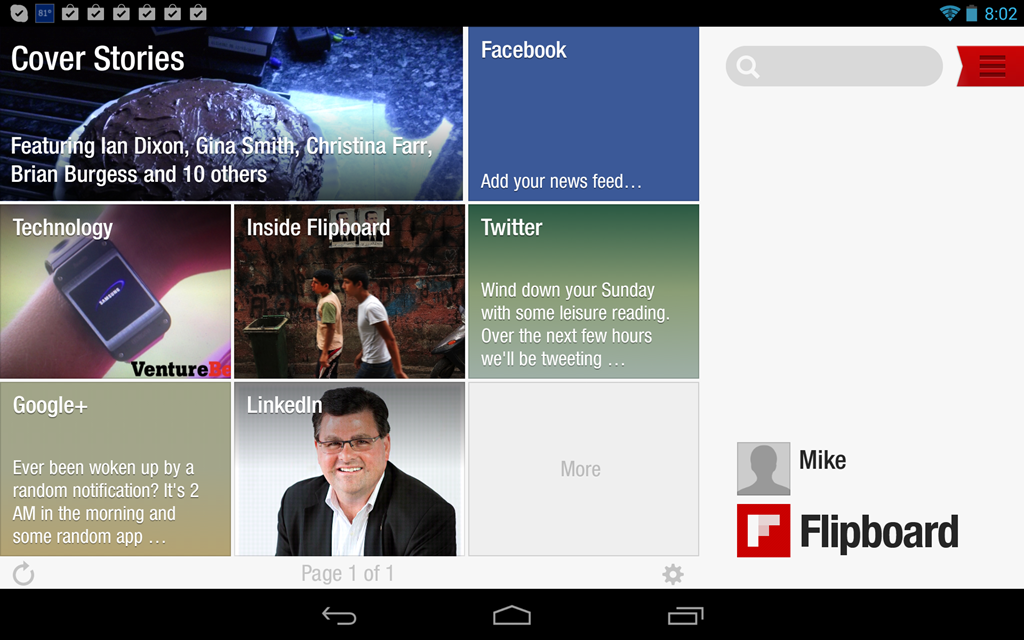
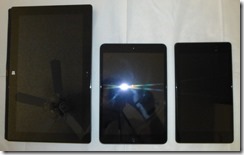
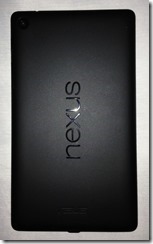
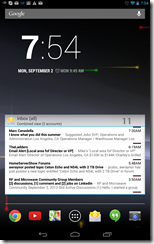
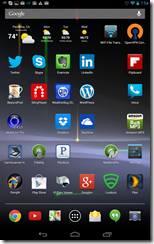
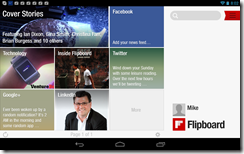
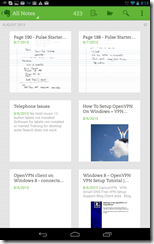
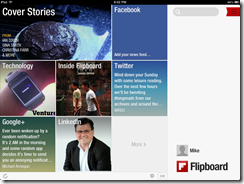
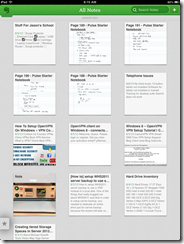
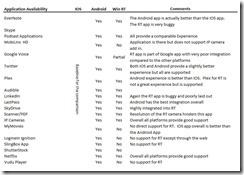
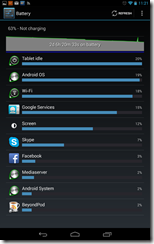
[…] Click here to read the full article […]